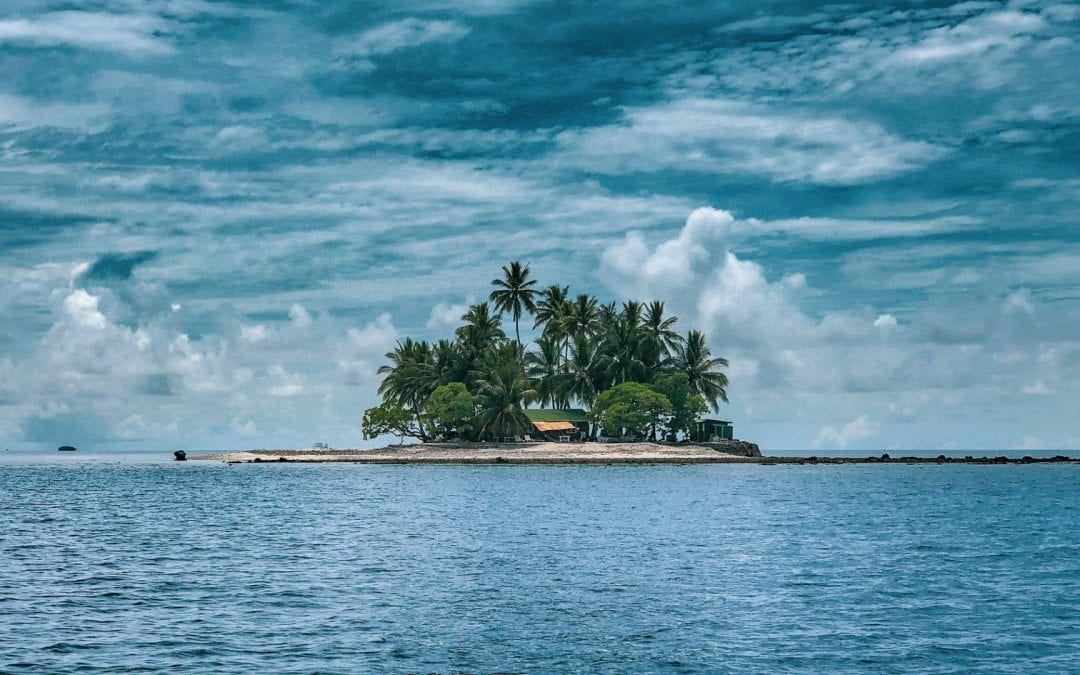By Denise Montgomery
Low-lying Pacific islands in atoll archipelagos such as Tuvalu, Tokelau and Kiribati are likely to adapt to the effects of climate change rather than simply sink beneath the waves.
Tuvalu, Tokelau and Kiribati are widely considered under threat from rising seas and severe storms due to climate change.
Researchers from the University’s School of Environment recreated a scale model of tiny Fatato Island, on the southeast rim of Funafuti Atoll in Tuvalu, to test the ability of the real island to withstand predicted climate effects.
The study simulated higher sea levels and storm-generated waves up to four metres in a 20m-long water chute or ‘flume’ to replicate real-world sea level rises of 0.5m and 1m in a purpose-built laboratory at the University of Plymouth in the United Kingdom.
The team chose uninhabited Fatato as a model because they were able to create an accurate 1:50 scale replica using data collected from previous field surveys and research. In the real world, the tiny island is just 90m at its widest point and 860m long. The scale replica created for the laboratory tests was 0.6m wide and 2.6m long with a high point of 10cm.
Using lasers to monitor changes in the model, and translating those to a real-world scenario, the researchers found the crest of the island – its highest ground – actually increased 1.13m as higher sea levels and strong wave action washed sand and gravel toward it. That elevation was achieved at the expense of lower-lying areas, simultaneously reducing the amount of low-lying land as the crest got higher. But that might
not happen in the real world where islands are continually replenished by sediment from the surrounding reef.
Importantly, the island also moved laterally, migrating across the coral reef as sand and gravel shifted position with the action of waves and higher water levels.
Lead author and doctoral candidate Megan Tuck says the findings, along with previous research, have profound implications for understanding the physical vulnerability of reef islands. She says it challenges the assumption that they will simply drown or create ‘climate refugees’.
“Atoll islands do not sit inert on the reef. Instead the gravel and sand they are made up of shifts on the reef itself so that the land changes in response to environmental conditions. Interestingly, the elevation of the atoll crest – the highest ground – mirrored the rise in sea levels, which suggests sea level may be an important controlling factor on island elevation.”
Co-researcher Dr Murray Ford, senior lecturer in Environment, says the study shows islands are able to change shape or physically adjust to higher sea levels and more severe storms. “While the effect on particular islands of climate-induced changes will vary, there is plenty of evidence to suggest these islands are more resilient than commonly thought,” he says.
“Some areas may become uninhabitable, other areas will keep pace with rising seas. It will be up to governments and communities to decide how to respond over time but this study highlights the fact that nature provides a template for adaptation and island communities may need to adapt too.”
Previous research used aerial photos going back as far as 1943 to track changes to the 101 islands that make up the Tuvalu archipelago. It found that overall there was a net gain in land area of 2.9 percent or 73.5 hectares over the past 40 years.
This article was originally published in the August 2019 edition of UniNews and was republished with permission.
Disclaimer: The ideas expressed in this article reflect the author’s views and not necessarily the views of The Big Q.
You might also like:
Are our oceans under threat? 🔊

